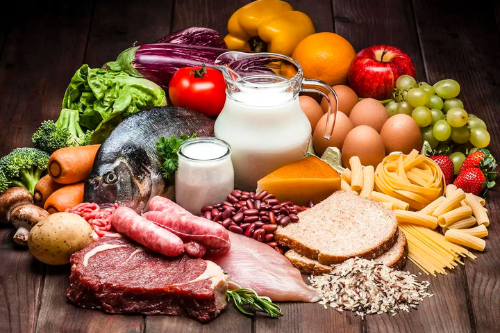You’ve come to the right place if you’re looking for a DASH diet meal plan that makes breakfast, lunch, and dinner simple and delectable.
Dietary Approaches to Stop Hypertension, or DASH, is an eating plan that was created especially by doctors to lower blood pressure and prevent hypertension. Nearly 50% of Americans have this chronic condition, which increases the risk of heart disease and stroke.
Doctors frequently advise individuals with high blood pressure or those who are at risk of acquiring it to follow the DASH diet.
High blood pressure is defined by the Centers for Disease Control and Prevention (CDC) as readings of 130/80 mm Hg or greater. This indicates that your systolic blood pressure, which measures the force exerted on your arteries when your heart beats, is higher than 130 mmHg, and your diastolic blood pressure, which measures the force exerted on your arteries while your heart is at rest, is higher than 80 mmHg.
The DASH diet is also utilised for weight control if you don’t have high blood pressure and are simply seeking for a healthier way of eating for overall wellness.
No matter why you want to try the DASH diet, getting started might be difficult. So, to make this way of eating an easy and tasty way of life, adopt this straightforward seven-day DASH diet meal plan.
Table of Contents
7-Day DASH Diet Meal Plan

Use this seven-day meal plan to easily adhere to the DASH diet.
DASH Diet Meal Plan: Day 1
- Breakfast: Add berries, seeds, and nuts to whole-grain oatmeal.
- Lunch: Lunch will be a salmon and broccoli quinoa bowl.
- Dinner: Dinner will be low-fat sour cream and salsa on black bean tacos.
DASH Diet Meal Plan: Day 2
- Breakfast: Make a fruit smoothie with Greek yoghurt for breakfast.
- Lunch: A salad with diced tomatoes, cucumbers, and grilled chicken. The dressing is made of low-fat yoghurt.
- Dinner: Swordfish with lemon and quinoa for dinner.
DASH Diet Meal Plan: Day 3
- Breakfast: Smoothie for breakfast made with berries and low-fat Greek yoghurt.
- Lunch: A salad with low-fat feta cheese, chickpeas, strawberries, and spinach.
- Dinner: Dinner will be a stir-fry of cubed chicken, broccoli, bell pepper, and snow peas over brown rice.
DASH Diet Meal Plan: Day 4
- Breakfast: Breakfast will consist of tofu scramble, salsa, and whole-wheat bread.
- Lunch: Whole-grain wrap with tuna salad and low-fat yoghurt.
- Dinner: Dinner will be white beans, mixed veggies, and a minestrone soup in a salt-free broth.
DASH Diet Meal Plan: Day 5
- Breakfast: Chia pudding for breakfast made with fruit and unsweetened almond milk.
- Lunch: Lunch will be a tuna, edamame, and seaweed salad quinoa poke bowl.
- Dinner: Dinner will be turkey burgers on a whole wheat bun with lettuce, tomato, and onion.
DASH Diet Meal Plan: Day 6
- Breakfast: Smoothie for breakfast made with spinach, mango, and low-fat yoghurt.
- Lunch: Lunch will be lean ground beef tacos and slaw.
- Dinner: Dinner will be grilled chicken and whole wheat pasta with tomato sauce.
DASH Diet Meal Plan: Day 7
- Breakfast: Porridge made with whole grains, pears, and cinnamon for breakfast.
- Lunch: A whole grain wrap with cucumbers, tomatoes, and hummus
- Dinner: Dinner will be a lentil curry with celery, carrots, and onions.
Tips for Following The DASH Diet
The DASH diet aims to lower sodium consumption in order to lower overall blood pressure. Your level of hydration is a key element in controlling blood pressure. It’s crucial to get your recommended daily intake of water.
Adult men should drink around 15.5 cups of liquids per day, while adult women should drink about 11.5 cups per day, according to the US National Academies of Sciences, Engineering, and Medicine.
You should drink enough water and avoid foods and beverages that dehydrate you. For instance, both caffeine and alcohol are diuretics, which can result in dehydration. High salt and sugar content in highly processed foods can also raise the risk of hypertension.
Aim to consume more whole grains and produce rather than processed meals and red meat. Consuming a lot of dietary fibre in the form of fruits and vegetables is crucial.
These make you feel fuller during and after meals, reducing the likelihood that you’ll overeat or turn to high-salt or high-sugar foods. They also assist digestion and blood sugar levels.
